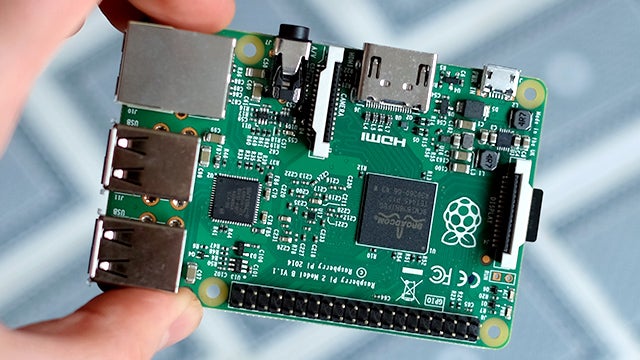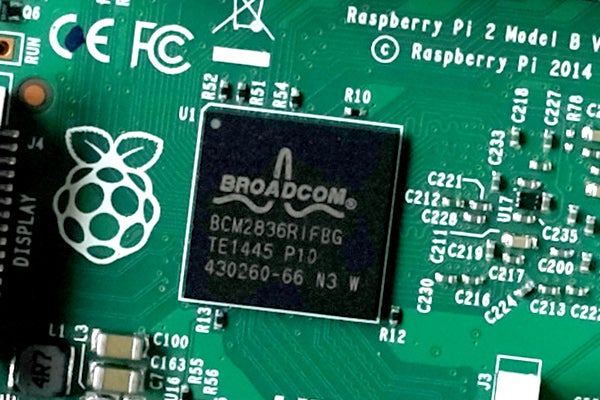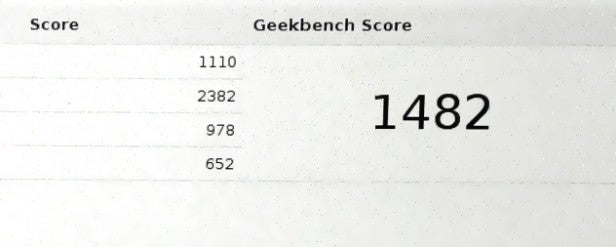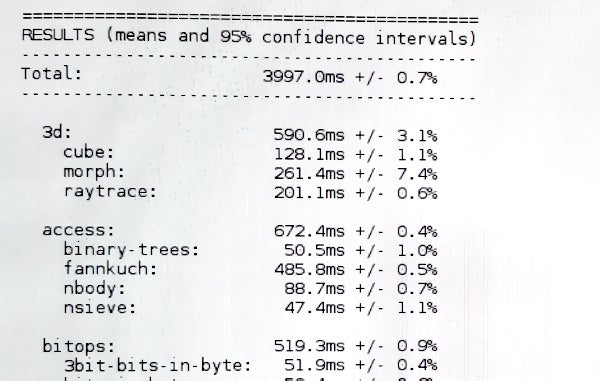Raspberry Pi 2 Review - Power and Performance Review
Power and Performance
Serious computing power at a trifling price

Sections
- Page 1 Raspberry Pi 2 Review
- Page 2 Power and Performance Review
- Page 3 Raspbian, XBMC, Emulators and Verdict Review
Raspberry Pi 2 – Power and Performance
The Raspberry Pi 2 has a Broadcom BCM2836, a quad-core CPU with 32-bit Cortex-A7 cores. It has been deliberately used as it’s very similar to the original’s Broadcom processor, according to the Raspberry Pi Foundation, but with more power. The cores are clocked at 900MHz by default, and can be overlocked to 1.1GHz.
RAM is up to 1GB this time too. However, the GPU is exactly the same: the Broadcom VideoCore IV. A few phones have used this GPU, most notably the little-known low-cost Galaxy S2 Plus i9105 variant of the Galaxy S2 from back in early 2013. In other words we’re dealing with the graphical power of a lower-end phone from two years ago.

This is bad news for those hoping to see Android 5.0 Lollipop running on Raspberry Pi 2. Android has relied fairly heavily on GPU-accelerated performance since Android 4.0.
You will get much better performance from what has become the ‘core’ Raspberry Pi OS, though — Raspian. This is a customised version of Debian, and is what most dev projects we’ve seen are based on.
However, we can imagine some of you want to know a bit more about the exact performance benefits. Offering exact comparisons with Android phones, which have often roughly the same amount of power and the same kind of chipsets, is difficult because our favourite benchmarking tools like Geekbench 3 are not available for Raspberry Pi (only an older version of Geekbench is).

We dug up an old ARM-compatible version of the tool, version 2.4.2, to see how it would compare with the first-gen Raspberry Pi. As hoped, it shows an absolutely massive improvement.
Where the first Raspberry Pi earned about 283 according to results posted online, we got 1482 points out of the second-generation model. While Geekbench 2 and the current Geekbench 3 are not directly comparable, their results are designed to be reasonable similar between devices that don’t rely on changes made in the newer version.
This is really quite an excellent result, suggesting the power on tap isn’t light years removed from what you get from a Snapdragon 400, which usually scores slightly less with Geekbench 3. Of course, this makes a lot of sense. Both offer four cores that based on the ARMv7 Cortex-A7 architecture with clock speeds of 900MHz-1.2GHz.
Other benchmarks show there’s a lot more to real-world performance than is indicated by fairly abstract benchmarks. We saw this when we ran Sunspider using the browser built into Raspbian, the ‘default’ Raspberry Pi OS.
Through this Epiphany browser, the Raspberry Pi 2 took 4014.9ms, 4044.1ms and 4021.1ms in our various runs to complete the test. This is much slower than the sorts of speeds we’re used to from Snapdragon 400 phones — the Moto G tends to score around 1450-1550ms, using the Chrome browser.

Sunspider is a test hugely affected by the efficiency of the browser used to run it — it’s a Javascript test — so we’d advise not reading too much into this result. However, once again it is useful comparing the generations of Pi. The B-plus version apparently takes around 23500ms to finish the test. Claims that the Raspberry Pi 2 is a huge generational improvement are real.


